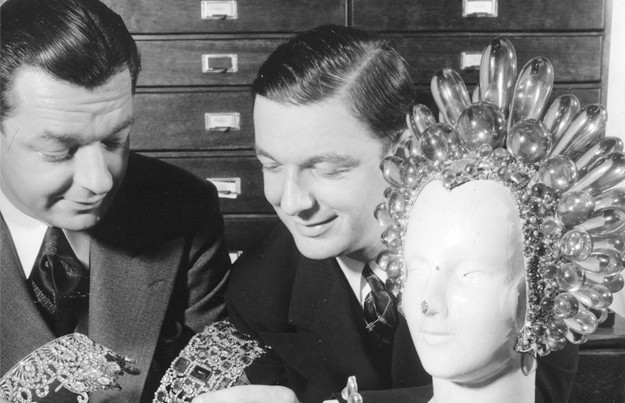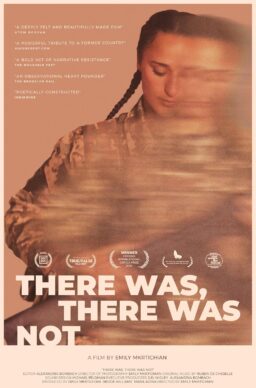The family-owned jewelry firm Joseff of Hollywood has been providing sparkle and glamor to the movies for almost a century. At the opening reception of the Hollywood Museum exhibit showcasing some of Joseff’s treasures, Leonard Maltin paid tribute. In an email, he wrote, “Joseff was creative enough to attract attention from costume designers and clever enough to rent rather than sell, his work. He was also savvy about what photographed well—putting a matte finish on his gold pieces so they wouldn’t glare under the studio lights. He was a genius in his particular field.”
In an interview with RogerEbert.com, Kristin Joseff, part of the family’s third generation to run the business, talks about the exhibit, the Joseff detour into the aerospace business, and expanding via social media and online ordering.
Let’s start by talking about you. Where did you grow up, and what did you do before you came to Joseff?
I grew up in Northern California. Previous to working at Joseff, I worked in home health care as a case manager for a non-medical home care agency.
That takes a lot of organizational skills, which I’m sure have come in very handy.
It does. That was a big reason why my husband asked me to come over to the company.

I know that the original Joseff was not originally in the jewelry business or in California.
We discovered that Eugene Joseff, who started this company, had a grandfather who was a jeweler, but he was a fine jeweler, not a costume jeweler. Eugene made his money doing ads, but jewelry was his hobby. In the late 1920s, he came out to Hollywood, as did many others. And he got his foot in the door by doing ads. We even, have some of his old original sketches. He got to be friends with the costume designers and that seems to be how he fell into the Hollywood crowd. He was criticizing the fact that actresses were wearing their own contemporary jewelry in these period films that were coming out and he was challenged: “If you can, do better,” and so he did.
How did he do research for the period pieces he created?
He amassed a huge reference library. We still have most of it. There are hundreds of books about 17th-century French jewelry. He’s got ladies’ journals going back, I think, to its inception. We have leather-bound Harper’s Bazaar volumes going back to the 1880s. And he was inventive. He was befriended by costume designer Walter Plunkett, who was told that the censors had deemed the costumes too racy, because they showed too much bosom. So he came up with these pieces called cleavage, which are like a brooch or an ornament that was sewn into the cleavage and looked like an adornment. But really, it was to save the costumes from having Walter Plunkett have to redo them.

Nearly a century later, it seems brilliant that he leased his creations instead of selling them to the studios, who at the time kept huge warehouses of costumes and props.
It was an invention of necessity. He didn’t have the funds to keep making and selling jewelry at the rate that they were going to need it. So, he came up with a rental system, where he would charge 5 percent of the sales price per week for filming. It was such a discount that the studios couldn’t really say no. Back in those days, they were cranking out a movie in a few weeks instead of a year or two like we do nowadays.
That allowed him to build up his inventory faster, so he could create things specifically for certain costumes and have a very large catalog of rentals that were just grab-and-go.
They did sell pieces occasionally, especially in the 1950s. The studios started to catch on a little bit and started demanding more sales instead of rentals because they realized they could reuse things over and over. But we have held on to a really special collection, and we’re glad we’ve been able to hold on to it because we don’t know what would have happened to the pieces.
Jewelry is known for being shiny and sparkly, and cameras are known for having trouble with objects like that. How did Eugene Joseff develop jewelry that didn’t create lens flares?
Back in the early days of film, they didn’t have the same filtering capabilities that we do now. There were a lot of tricks that they used, like putting Vaseline on a lens or something like that, to soften it, but they didn’t have effective filtering. So, if you used real jewelry, the glare from the lights would actually flash out parts of the film, and it didn’t come through as clearly. Eugene Joseff’s finish was a partially matte gold finish. On film, it looks very realistic, and in person, it looks antique.

When did Joseff start selling retail?
It was in the mid-1930s that he started doing retail. The earliest ads that we have are from December 1936. So, it came about pretty quickly. he was making jewelry for films, and quite often, the actresses were saying, “Hey, can I have one of these? This is lovely.” And it didn’t take him long to realize that there was a market there. He started with designs that were based on film pieces. It’s a piece that’s just called the frog on the lily pad that was originally designed for Rosemary Lane to wear, but it was very easy to replicate in retail, and it’s something that we still produce today.
And now you are going to sell online, right?
Yes, but We’re doing a big revamp. The one thing about being such an old company is that all of our things were analog for so long. We may have an inventory number for a brooch, which may have up to a dozen different slight variations, which has made online sales a little interesting. Because you don’t want to post a picture of something online and then have them receive it and say, “Hey, this was different,“ you know? But due to the nature of the pieces having been handmade and the fact that we have inventory that spans all the way from the present day all the way back to the original 1930s line, there are some variations.
You’re reaching out on social media, too. I like your Instagram!
It’s been a great way to engage fans and customers and share the history. I think there are a lot of people who didn’t realize that Joseff of Hollywood was still in operation. They thought of us as something from the past. It’s been great to then meet new people through social media, costume designers and stylists and even customers all over the world. I’ve got customers asking for pieces from China, Belgium, France, and the UK. It’s been a great way to open those connections back up and to reach people again.
How did Joseff get into the aerospace business? What is the connection is between jewelry and airplanes?
So, the type of jewelry that Joseff was producing was hand-soldered pieces made from either stampings or castings. He was casting in-house, and that required having a foundry. When World War II broke out, he wanted to be a glider pilot. He was obsessed with aviation. And he got rejected because I think it was McDonnell Douglas who stepped in and said, “You would be more helpful to the war cause by producing aerospace parts.” And so they outfitted the foundry with a whole bunch of new equipment to do larger-scale production. And that’s how he got converted. At one point, he had jewelry and aerospace parts going down the same line.
Some of the parts, with the blueprints and everything, were considered classified government information. Eugene Joseff’s wife was Canadian, so she was not allowed on site. That’s how she ended up taking on the retail business side.
Joseff has been family-run for almost 100 years. Why is that so important?
We’ve talked about the fact that we could expand if we were to turn it into something that was not a small family operation, but we so much value the integrity of the history that it’s something that we want to ensure is preserved. We don’t want it to get to a point where it would be outside of our control to maintain the legacy.

How did the museum show come about?
I met Donelle Dadigan, co-founder of the Hollywood Museum, through costume history expert Kimberly Truhler, who is affiliated with the TCM group. We partnered a few times when I brought jewelry from films she was going to be lecturing about.
I ran into Donelle at one of these events pre-COVID at one of these events, but then COVID shut everything down, and I completely forgot about it. But then I got back in touch with her and told her that we love to share the history. We love to share not only our role in it but also how certain things came to be within these films. So we met with Donnell, and she really gave us a huge amount of real estate to showcase the jewelry, which is amazing.
We have all of these pieces, and we love to share them, but one of the drawbacks is that once we identify a piece that has been worn by a star above a certain caliber, we can’t rent that piece out anymore. It becomes too much of a liability. I can’t rent out Marilyn Monroe’s bracelet because if it doesn’t come back, that amount is unrecoverable. It is priceless. And then what happens to the legacy of that? That is why we had the auction in 2017.
It’s hard to find a museum that will give you enough space to house everything together. We wanted to share the history and everything, and we wanted them to be out with people who would love them. We got back in touch with some of the people who bought pieces at the auction. We really tried to blend some historical context, classic film jewelry pieces, and then more modern work that we’ve done over the last couple of decades.

What are some of your favorite pieces from the inventory?
One of my favorites is a piece that didn’t make it into the museum. It’s something that we will probably show later. But it is in the fashion show sequence from “The Women.” In that runway sequence, there’s a woman with ornaments on her gloves that are sticking up off of her hands. And we have those ornaments. In fact, we discovered them about five or six years ago. They were in a drawer.
It’s amazing how much you find randomly. I just think that they are so cool. There’s also a bracelet that was made for the film that was in the part of the sequence that got cut. It has this swoop that comes out from the bracelet that would be impossible to wear in real life, and a big jewel on the end of the swoop. We finally found it on Carmen Miranda in a publicity still at some point. So those are a couple of my favorites.
I love Clark Cable’s watch fob, the Carnelian one. It’s got these little swirls on top. And then there’s a set that wasn’t made by Joseff. About 20 percent of our collection was not made by Joseff. It was by other designers. But it’s an old French set that we rented out to Queen Charlotte, the “Bridgerton” prequel. You can see it in the show and also in some of the publicity stills. It looks like a blue Aurora Borealis.
Do you wear any of the pieces yourself?
It’s like having the world’s biggest jewelry box. For the museum opening, I was able to wear a reproduction of Oda Manson’s “Shanghai Gesture” bib necklace, but this one was made of aquamarine because I don’t wear topaz. I loved this piece so much that my husband recreated it for me.












